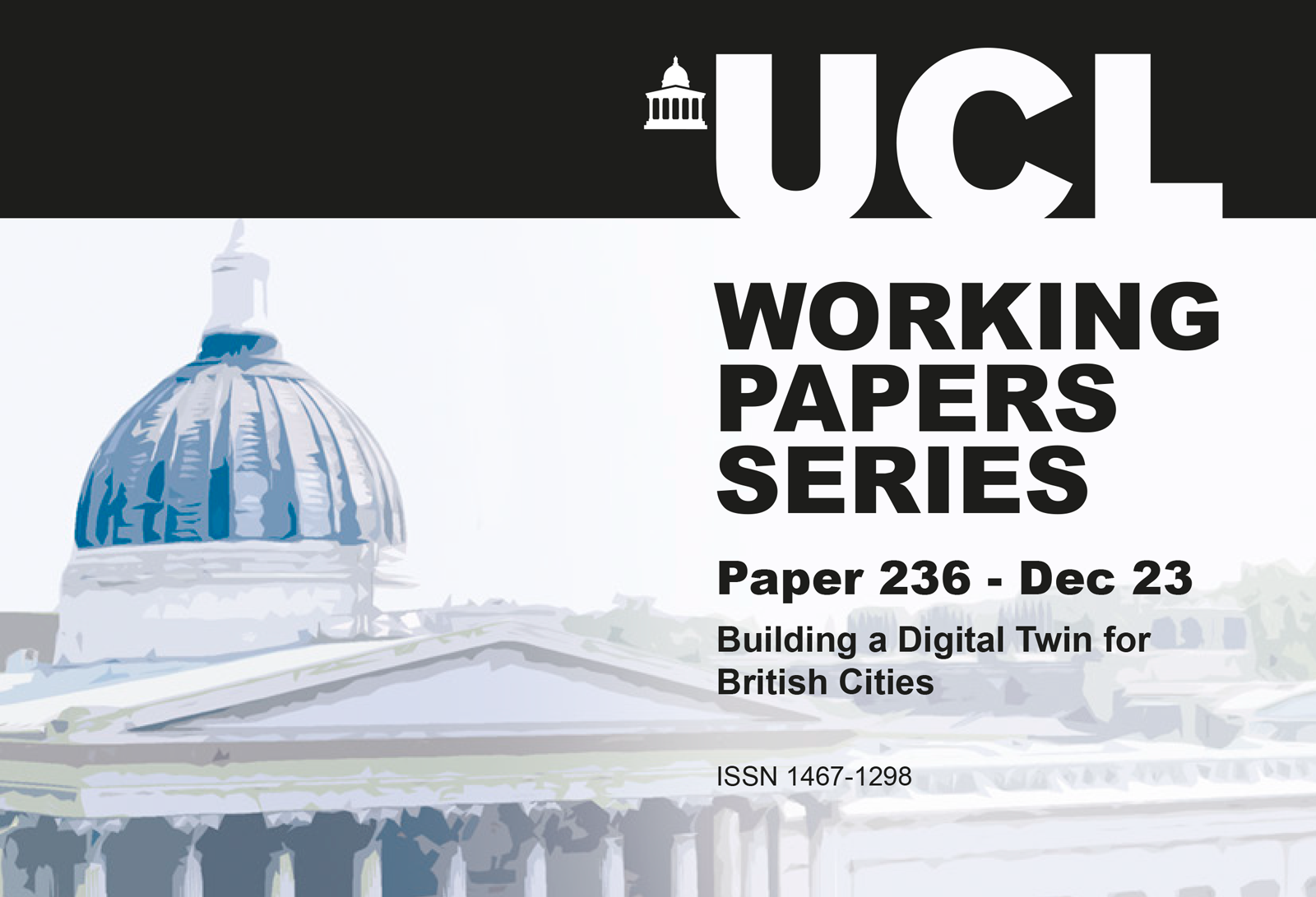CASA Working Paper 236
Building a Digital Twin for British Cities

3 December 2023
Abstract
Ever faster computers are enabling us to extend our standard land use transportation interaction (LUTI) models to systems of cities within which individual cities compete for resources within the wider environment in which they interact. As we scale up in this way, we are able to simulate and measure the impacts of large-scale infrastructures at different spatial levels. Here we build a platform, which is essentially a digital twin, for over 8,000 urban places in Great Britain where we can rapidly model all flows between these locations using multi-modal spatial interaction models. We first present the structure of the model and then apply it to population, employment and trip flow data for three modes of travel (road, bus and rail) between small spatial units defining the three countries, England, Scotland and Wales. We then tune and train the model to reproduce a baseline, and follow this with a demonstration of the web-based interface used to run and interact with the model and its predictions. Once we have developed the platform, we are able to explore variants of the twin, partitioning the country in different ways, showing how different forms of spatial representation change the performance of the model. We are developing the model at a much finer scale making comparisons of performance while adding another mode – an active travel layer – that elaborates the twin. We finally illustrate how the model can be used to measure the impacts of new scenarios for rail, simulating the Integrated Rail Plan and the High Speed 2 (HS2) proposal.
Authors: Michael Batty and Richard Milton
Download CASA Working Paper 236 (file size 5 MB, file format pdf)
 Close
Close

